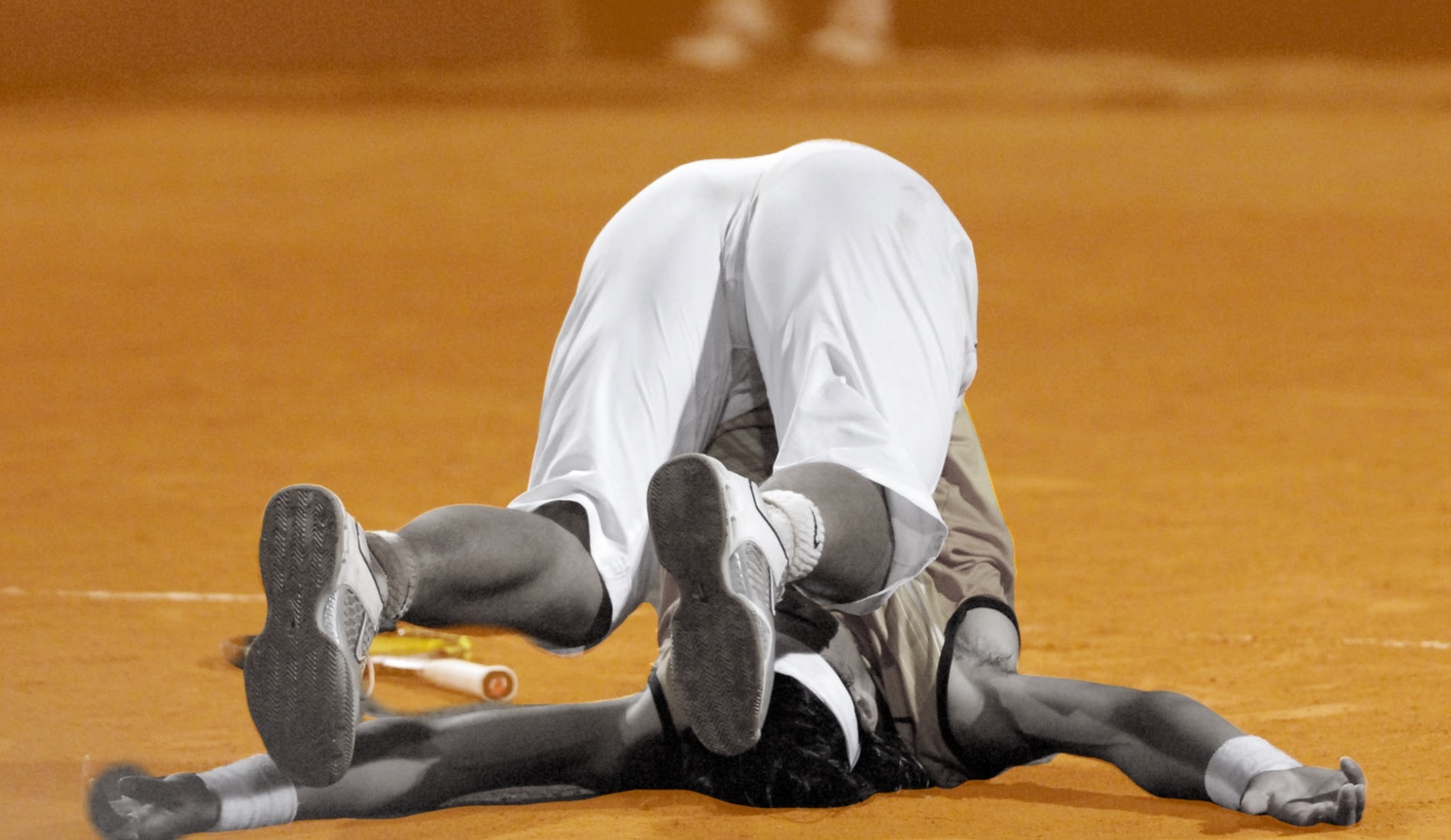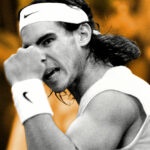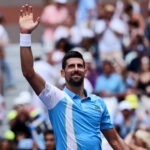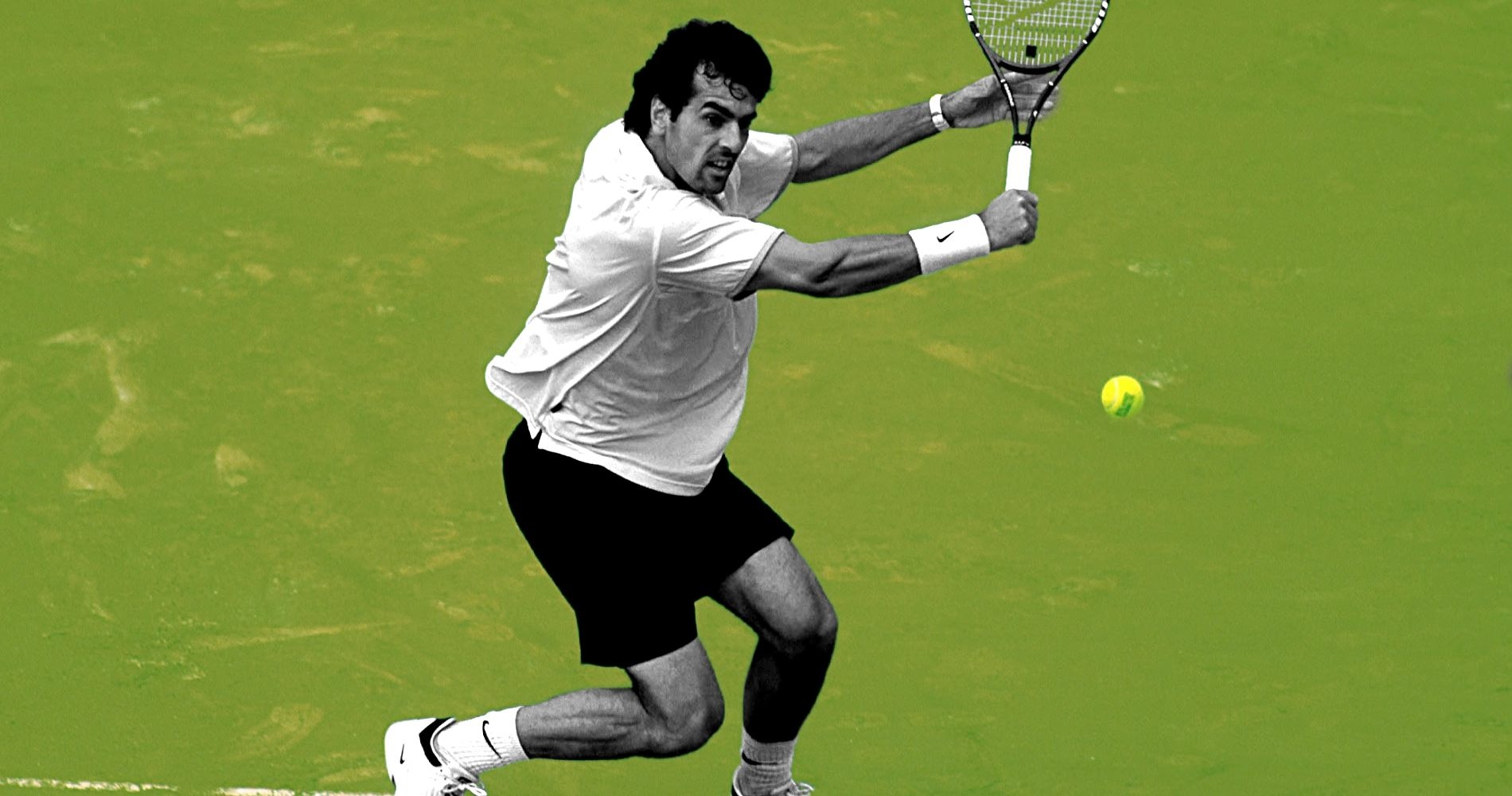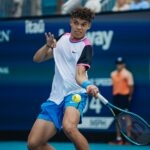April 20, 2006: The day Guillermo Coria won despite 23 double faults in Monte-Carlo
Every day, Tennis Majors looks back at the biggest moments in tennis history. On April 20, 2006, Guillermo Coria reached the quarter-finals in Monte-Carlo despite serving 23 double faults
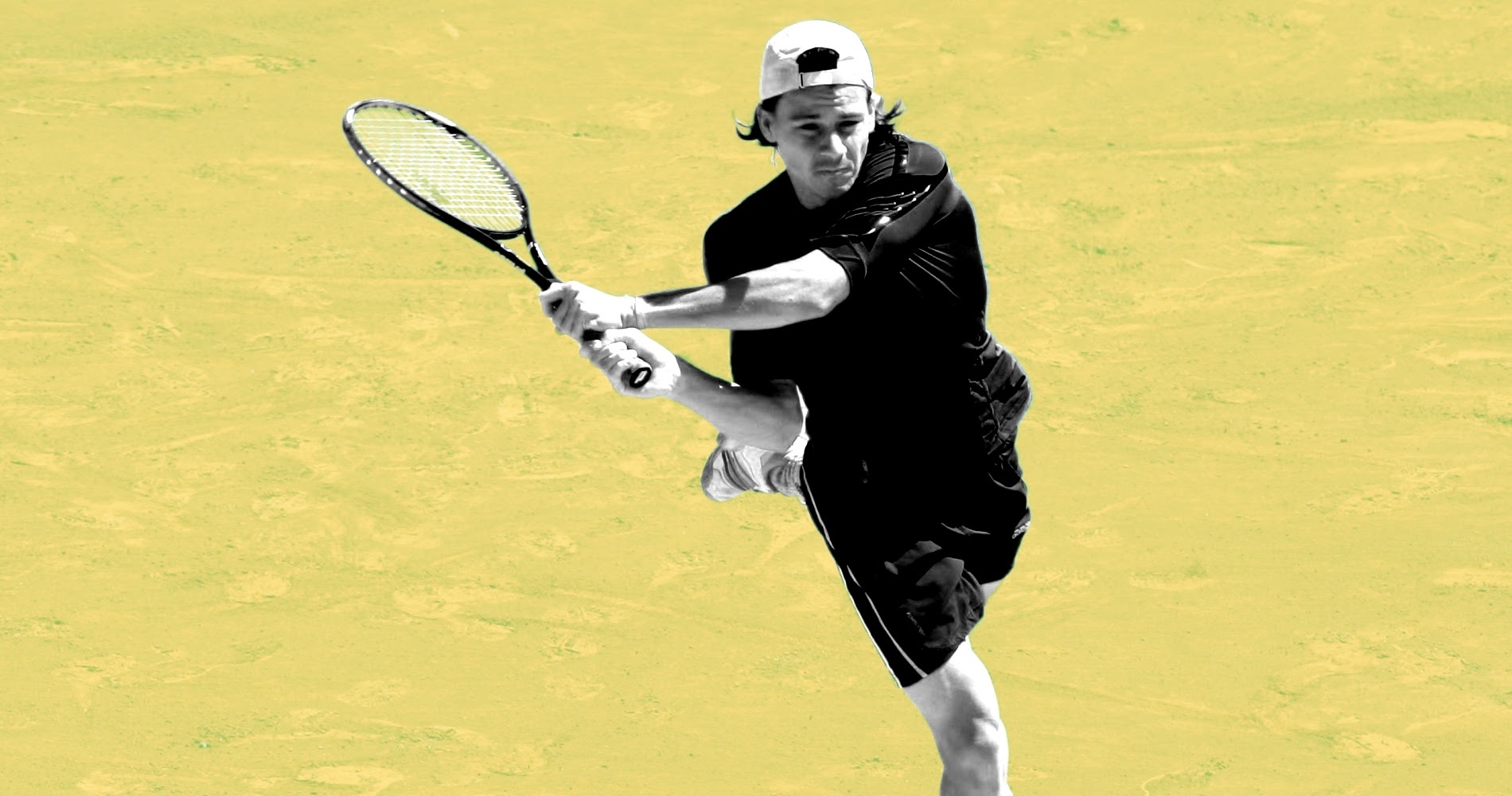 Guillermo Coria
Guillermo Coria
What happened exactly on that day
On this day, April 20, 2006, in Monte-Carlo, Guillermo Coria, runner-up at the 2004 French Open, defeated Nicolas Kiefer (6-7, 6-4, 6-3) to reach the quarter-finals of the event, despite an incredible total of 23 double faults. The Argentinian, who had struggled with his serve since a shoulder operation at the end of 2005, had already double faulted 20 times in the previous round.
The players: Guillermo Coria and Nicolas Kiefer
- El Mago Guillermo Coria
In 2006, Guillermo Coria, aged 24 and ranked No 9 in the world, was considered as one of the best clay-court players on the Tour. Nicknamed “El Mago” (“the Wizard”), his game relied on amazing footwork, great baseline strokes and outstanding touch. His early career was marked by a seven-month doping ban, in 2001, which even earned him the nickname “Nandrolino” in the Spanish-speaking press. Nevertheless, he came back, and he had a breakthrough year in 2003. That year, Coria reached the final at the Monte-Carlo Open (defeated by Juan Carlos Ferrero, 6-2, 6-2), but he also claimed his first Masters 1000 title in Hamburg (defeating Agustin Calleri in the final (6-3, 6-4, 6-4) before reaching the semi-finals at Roland-Garros (lost to Martin Verkerk, 7-6, 6-4, 7-6).
Coria’s career peaked in 2004, when he triumphed in Monte-Carlo (defeating Rainer Schüttler in the final, 6-2, 6-1, 6-3). At the time, he was even called “the king of clay” by some pundits, and he reached the final at Roland-Garros, although he lost there a dramatic final against Gaston Gaudio, where he blew a two-set lead and two match points (0-6, 3-6, 6-4, 6-1, 8-6). In 2005, he was one of the main favourites for the clay-court season, but a tornado named Rafael Nadal claimed all the biggest titles, defeating him a first time in April in the Monte-Carlo final (6-3, 6-1, 0-6, 7-5), and a second time in the final of the Italian Open (6-4, 3-6, 6-3, 4-6, 7-6). At Roland-Garros, Coria fell surprisingly early in the round of 16th against Nikolay Davydenko (2-6, 6-3, 7-6, 6-2). Later in 2005, he reached the same round of 16 at Wimbledon (losing to Andy Roddick, 6-3, 7-6, 6-4) and the quarter-finals at the US Open (defeated by Robby Ginepri, 4-6, 6-1, 7-5, 3-6, 7-5). In September, he crossed paths a third time with Nadal in the final of Beijing and the Spaniard would prevail again (5-7, 6-1, 6-2).
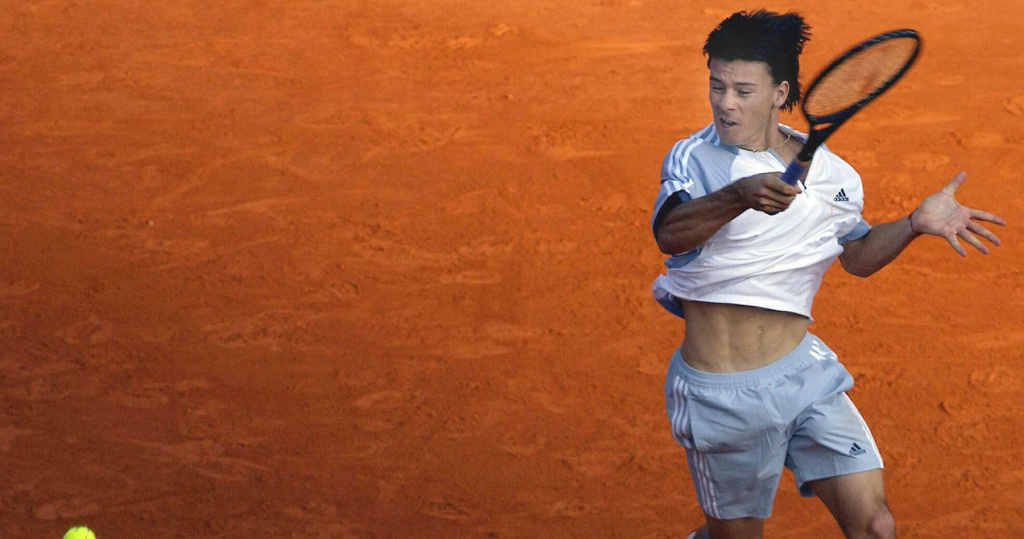
Coria underwent shoulder surgery at the end of the year, and, beginning at the start of 2006, he struggled on serve and his results were far below his usual standards.
- German star Nicolas Kiefer
Nicolas Kiefer, from Germany, was born in 1977. He was a very promising junior player, claiming two Grand Slam titles in 1995, and he qualified for his first Grand Slam main draw at the 1996 Australian Open. His breakthrough year was 1997, when, after he reached the quarter-finals at Wimbledon (lost to Todd Woodbridge, 7-6, 2-6, 6-0, 6-4), he finished the season as the German No 1. That same year, he also claimed his first ATP title, in Toulouse, defeating Mark Philippoussis in the final (7-5, 5-7, 6-4). In 1999, Kiefer claimed three titles, the biggest one in Halle (defeating Nicklas Kulti in the final, 6-3, 6-2), and, reaching two other finals in Dubai and Vienna, he climbed as high as world No 4, which allowed him to qualify for the Masters Cup, where he lost to Pete Sampras in the semi-finals (6-3, 6-3).
In 2000, despite adding two titles to his list of achievements, the German’s ranking dropped to world No 20 at the end of the year and, in the following years, he remained a good top 50 player but never entered the top 10 again. At the start of 2006, he reached the Australian Open semi-finals (defeated by Roger Federer, 6-3, 5-7, 6-0, 6-2), and in April, he was world No 13.
The place: Monte-Carlo Country Club
Located at the top of the Rocher de Monaco, with a unique perspective on the Mediterranean Sea, the Monte-Carlo Country Club hosted one of the oldest international tennis tournaments since 1928. Usually considered to be the start of the clay-court season, it later became one of the nine ATP Masters 1000 events. Amongst its former champions are a long list of clay-court terrors, such as Bjorn Borg, Guillermo Vilas, Ivan Lendl, Mats Wilander, Sergi Bruguera or Gustavo Kuerten.
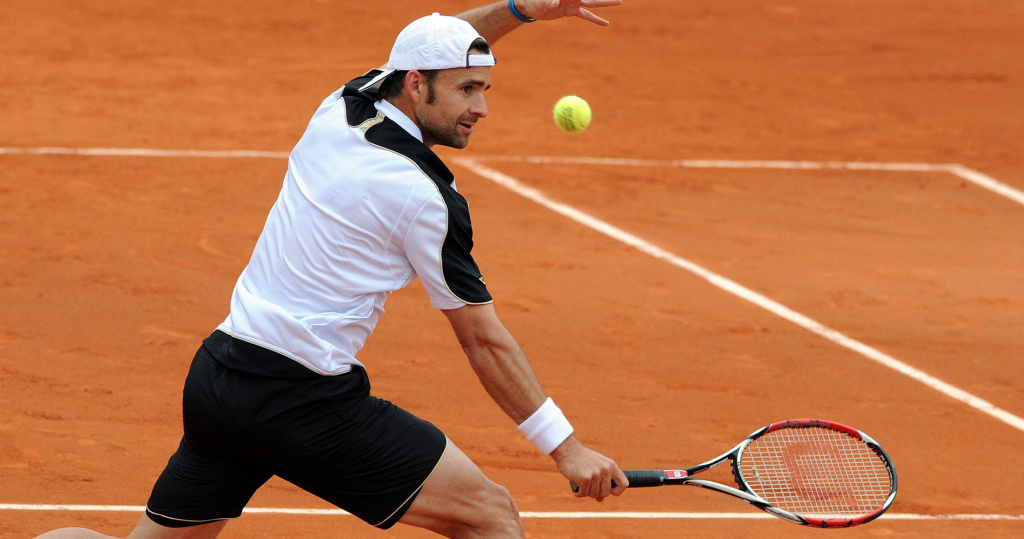
The facts
At the Monte-Carlo Open, at the start of the 2006 clay-court season, Guillermo Coria was one of the players who was under high scrutiny. Runner-up at the French Open in 2004, the Argentinian had been the second-best clay-court player in 2005, behind the young Rafael Nadal. However, he had undergone surgery at the end of the season and since then struggled mightily with his serve: at the Australian Open, he served no less than 23 double faults during his third-round loss against Sébastien Grosjean (6-2, 6-2, 3-6, 6-4). His short clay-court season in South America, in Buenos Aires and Acapulco, proved to be a disaster, and by the end of April, he had not managed to win two matches in a row since Melbourne.
When Coria, who had been in the final of the three last editions of the Monte-Carlo Open, dismissed world No 8 Mikhail Youzhny in the first round (6-3, 6-1), one could think that “El Mago” was back, just in time to become a contender for the Roland-Garros title, but in the following round, he went through a nightmare. Down 6-1, 5-1 against Frenchman Paul-Henri Mathieu, his serve had abandoned him. Relying on his fighting spirit and his amazing footwork, he clawed his way back, and, despite the 20 double faults, he finally prevailed (1-6, 7-6, 6-4).
In the round of 16, Coria faced Nicolas Kiefer, who had started the year by reaching the Australian Open semi-finals, but hadn’t obtained any great results since then. Although it was hard to imagine, Coria struggled on his serve even more than in his previous match, but once again, despite an amazing number of 23 double faults, he fought hard enough to prevail (6-7, 6-4, 6-3). At the end of the match, the German, bitter after having failed to take advantage of his opponent’s struggle, had a few words with Coria, and, during his press conference, he said that he never saw a player making so many double-faults except in women’s tennis, with Anna Kournikova.
“But I won the match, I broke his serve more than he broke mine,” said Coria to the journalists in a press conference during which his serve was the main topic. “I was able to win in spite of my bad serve, so this gives me confidence for future matches. Since I had surgery on my shoulder, I cannot hope to serve as well as I did before, but I’m still working on that shot and what I need is confidence. I’m hoping I will be able to serve as good as I played in my first match in Miami where I didn’t make any double-faults.”
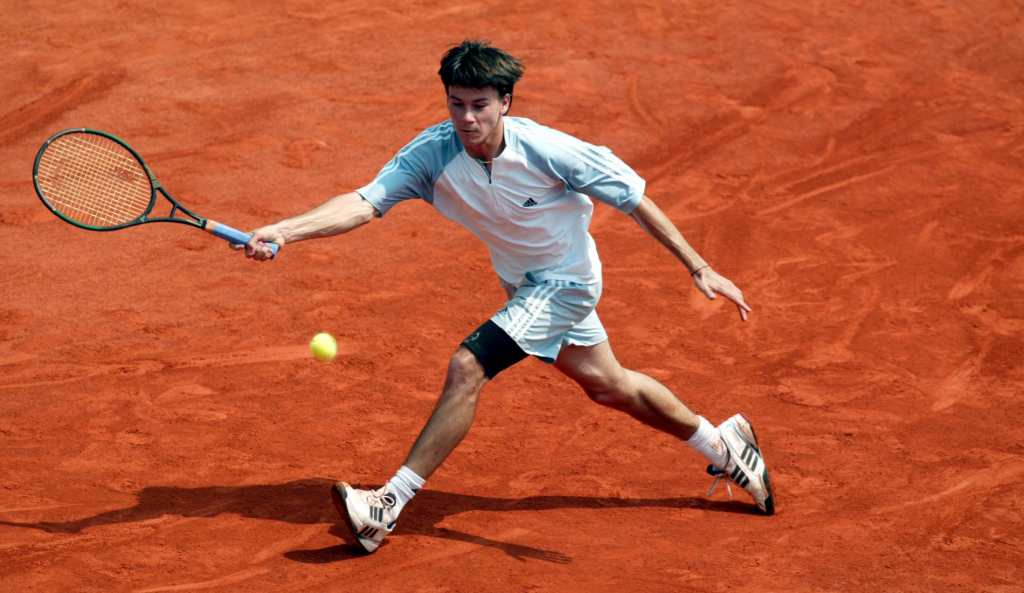
“How do you feel playing against Nadal with your serving problem?,” a journalist asked him, as he was to face the defending champion in the quarter-finals.
“It’s going to be a good challenge. I’m sure it’s going to be a great match. He’s the best player on this surface at the moment. It’s going to be an entertaining match. I will try to play my best tennis, and I hope it’s going to be good to watch for the crowd.”
What happened next
In the following round, Coria’s serve would be a little bit better, as he would “only” make eight double faults, but his opponent didn’t give him an opportunity to make any more: Nadal destroyed him, 6-2, 6-1.
“On this surface, he is really the toughest opponent I have ever met, because of the intensity he puts into every point,” Coria would comment.
Unfortunately, Coria’s serve would not really improve in the following weeks. The Argentinian would only win one more match during the clay-court season, and he would withdraw from Roland-Garros. His quarter-final run at Monte-Carlo would remain his last remarkable result in a big tournament. In his entire career, he would only participate in two additional Grand Slam tournaments, the US Open in 2006, and Roland-Garros in 2008, without ever winning a single match. He would announce his retirement from professional tennis in 2009.

